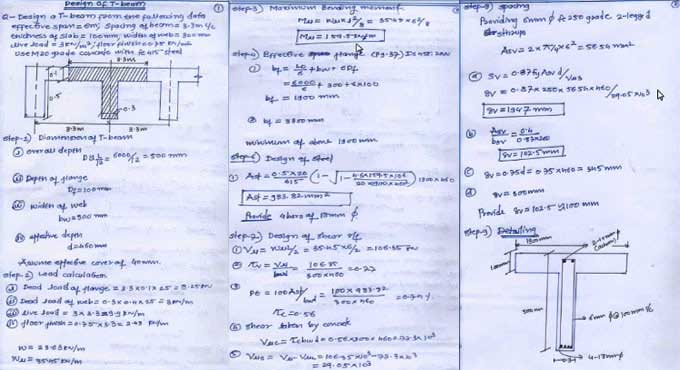NEWS | SOFTWARE | SHEET
Learn the detail process to design a T-beam
The T-beam is usually made of reinforced concrete, wood, or metal and uses to carry loads. A compression member or flange is formed at the top of the cross-section when it compresses. Slabs serve as flanges during compression.
Types of T-beam
Reinforced Concrete T Beam
The web and flange of a T-beam meet in concrete, which is brittle and thus too susceptible to shear stresses. For this reason, T-beams are made of steel and concrete.
When under load, flanges can detach from webs due to shear stress. As a consequence, reinforced concrete T-beams are vital to helping mitigate this possibility. Several questions arise from the design of composite structures, including how concrete and steel should distribute to a ratio to evaluate an objective function.
Steel T Beam
The T-beams are made of hot-rolled steel and are extruded, plate-welded, and pressure-fit. Non-load bearing beams are often connected using pressure fitting, a process using large rollers to pinch together the steel plates. Most modern roads and bridges are built using concrete, as it is more feasible to incorporate the material into the design.
In most T-beam constructions, concrete or steel are used only in conjunction with reinforced concrete, which is a composite of both. Concrete poured around rebar could be considered reinforcement in some cases, but in most cases, it refers to concrete poured around any number of means of reinforcement.
Therefore, engineers need to consider that there may not be a single material that is perfect for a particular job, and combining multiple materials may be the most effective solution.
Purpose of Using T Beam
It is vital to analyze bending moments, shear forces, and deflection of beams since they are mainly subject to flexure. If a bending moment applies to a beam, it experiences bending strain. Stresses within the body develop the resisting moment.
The beam is compressed in the top and tensed in the bottom when it has positive moments. For flexure members alone, concrete is an unsuitable material due to its poor tensile strength. A beam without the reinforcement would fail on the tension side before it would fail on the compression side when bent at an angle.
The steel reinforcement on the tension side places on the beam. Steel reinforcement resists tensile bending stress in concrete cracks due to the zero tensile strength of concrete.
Estimate the Design moment for T beams.
Using the ACI criteria, determine the effective flange width based on the effective depth. Considering the entire effective flange supports the compression, determine the practical moment strength.
A rectangular T-beam with effective flange width will calculate if the practical moment strength is greater than the design moment. The beam will behave as a true T-shaped beam if the practical moment strength is smaller than the design moment. You will need to estimate the internal couple's lever arm distance.
You can use the following formula to calculate an approximation of the steel area required. Reinforce the structure. Beacon width should be checked. Analyze the beam and determine its actual effective depth.
To get more clear ideas, go through the following exclusive construction video tutorial.
Lecturer: WIT Solapur - Professional Learning Community
Recommended Articles:
Types of Concrete Beam and their Reinforcement Details
Recommended Articles:
Different Types Of Beams In Civil Engineering


